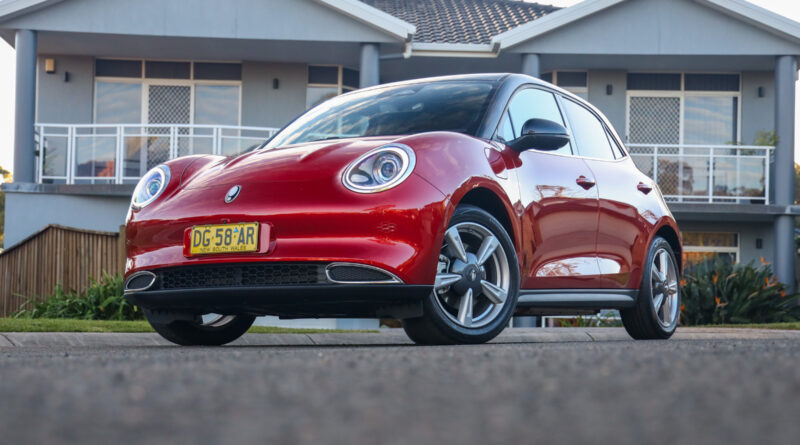2024 GWM Ora Extended Range review: One of Australia’s cheapest electric cars tested
2024 GWM Ora Extended Range review: How does the new budget-priced five-door hatch stack up against Australia’s cheapest electric cars? The GWM Ora is one of the most affordable electric cars on the market. The Chinese-made five-door hatchback sells from about $40,000, providing a budget way into an EV.
Sold under the Ora sub-brand overseas, the car is sold under the GWM banner locally, with Ora instead used as a model name.
READ MORE: Electric car price war for Australia’s cheapest EV! GWM Ora vs BYD Dolphin and MG4 Excite 51
Curvaceous styling seems to channel some Mini themes, including the headlights, front wheel arches and two-tone roof.
Prime electric competitors include the MG4 and BYD Dolphin.

But the GWM Ora could also compete with ICE machines such as the Toyota Corolla, Mazda3, Hyundai i30 and Kia Cerato.
Down the track Ora will also have a faster, sexier sibling in the GWM Ora Sport.
Value
The GWM Ora is available in four models, each of which shares the same five-door body and single electric motor driving the front wheels.
Pricing starts at about $41,000 drive-away, depending on what state or territory you’re buying it in.
We’ll simplify it by pointing to the list prices, which exclude on-road costs such as dealer delivery, registration and stamp duty.
For the entry-level GWM Ora Standard Range it costs $39,990. Interestingly, that price is $4000 lower than what was originally announced, presumably in response to the pricing announced for the BYD Dolphin and MG4.
The Ora Standard Range gets a 48kWh battery good for 310km of WLTP driving range.
Plus you get 18-inch alloy wheels, smart key entry, 360-degree camera, power-adjustable front seats, wireless phone charging and single-zone climate-control air-conditioning.
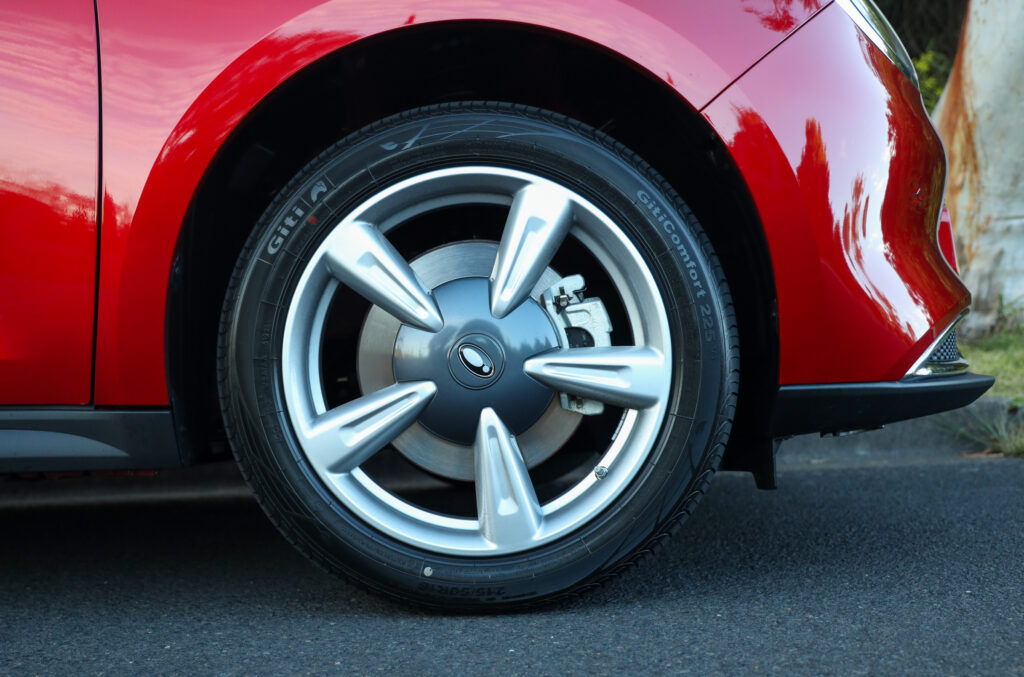
There’s also a 10.25-inch instrument cluster and 10.25-inch central infotainment touchscreen. That screen incorporates Apple CarPlay and Android Auto, each requiring a cable connection through the USB port.
There’s also fake leather seats, although it’s a convincing and quality-feeling material that also has some stitching and quilting patterns.
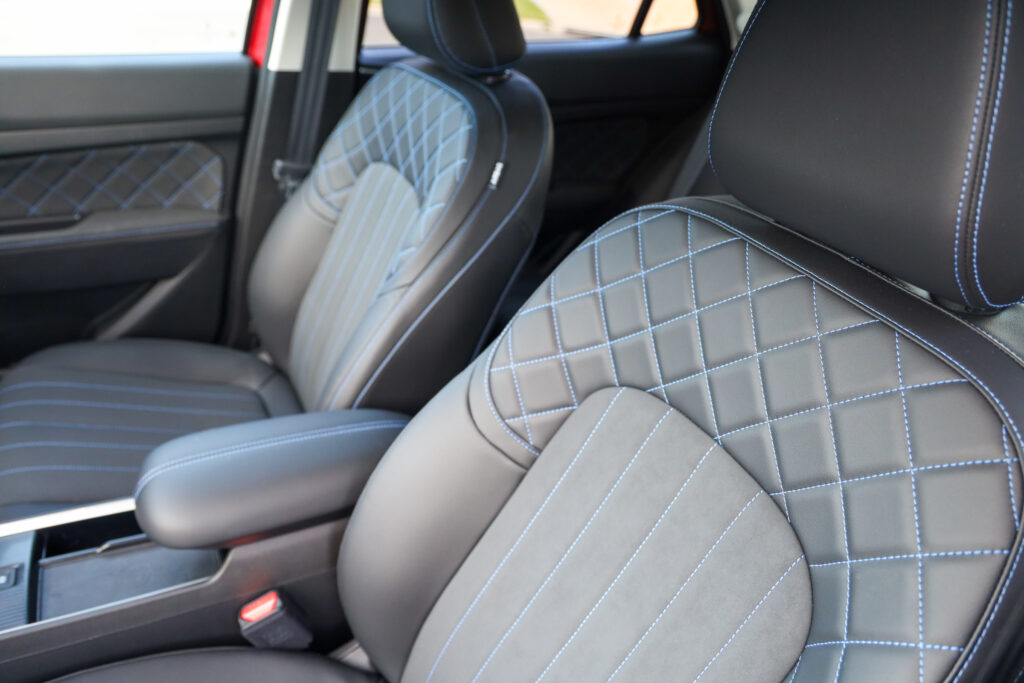
Despite the generous spread there are omissions. No digital radio (DAB) and no rear windscreen wiper, for example. Like all EV rivals, it also lacks a spare wheel.
Step up to the Ora Extended Range and it’s a hefty $6000 leap (that model only received a $2000 reduction as part of the recent price reductions) to make it $45,990 plus on-roads.

The only change is the bigger 63kWh battery, which increases the range to 420km. It’s also worth noting that the Standard Range gets a lithium-iron phosphate (LFP) battery whereas Extended Range versions get an NMC (or ternary) lithium-ion battery.
If you want more equipment then the Ora Ultra Extended Range is the next step, costing $48,990 before costs.
It gets an electric tailgate, panoramic sunroof, memory settings for the driver’s seat, front parking sensors, heated steering wheel and heating and ventilation for the front seats.
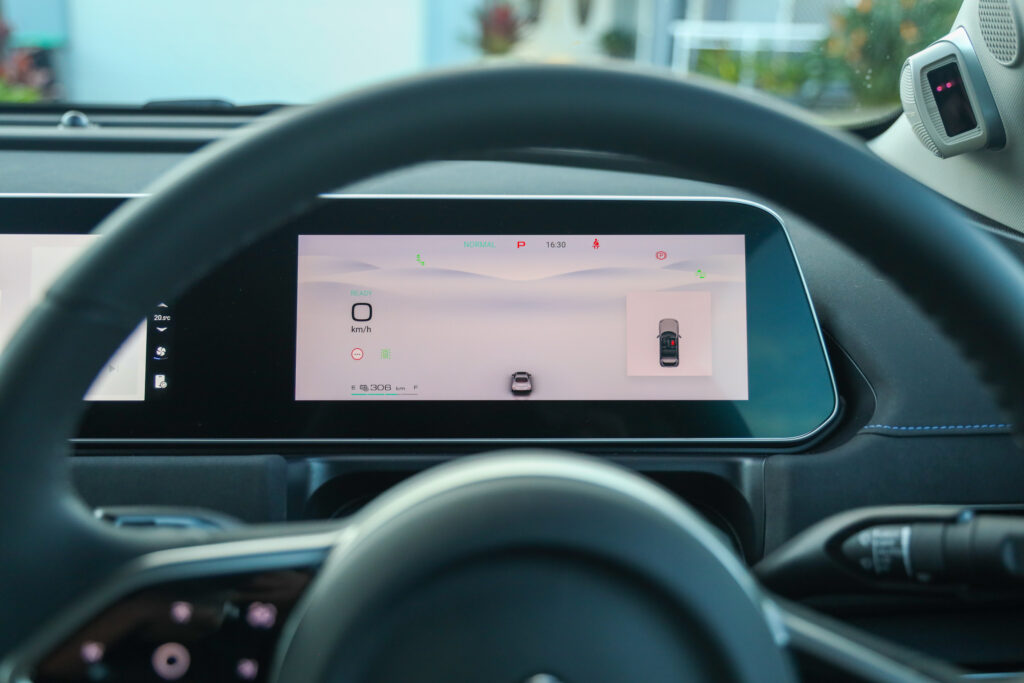
At the top of the Ora lineup is the GT, which costs $51,990 and gets different bumpers and grille for a sportier look. There’s also adjustable driving modes, lights for the vanity mirrors and red brake calipers.
The Ora is covered by a seven-year unlimited kilometre warranty, but that reverts to 150,000km if you use the car for commercial purposes, including ride sharing. The high-voltage battery gets an eight-year warranty that also claims unlimited kilometre coverage, although that also reverts to 150,000km for commercial use.
Servicing is due every 12 months or 15,000km but costs only $99 for the first five check-ups.
Inside
At 4235mm long and 1825mm wide the Ora is smaller than a Toyota Corolla on the outside.
But on the inside it feels appreciably bigger, especially in the back seat.
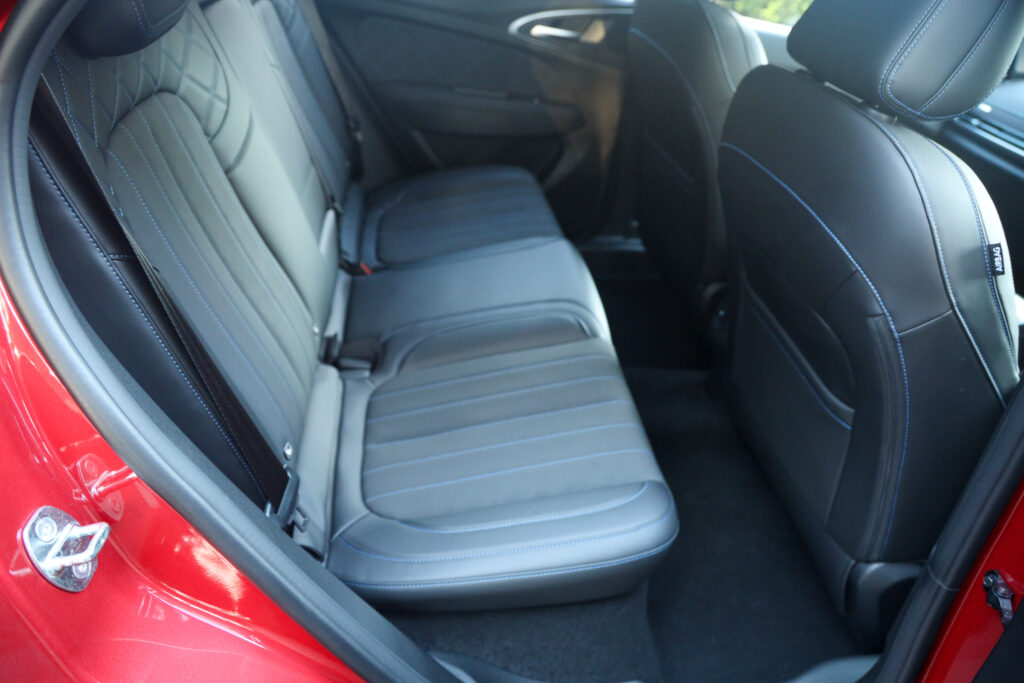
That’s due to being based on a bespoke EV architecture, which ideally positions major components (battery pack and motor) and leads to an almost flat floor.
Up front there’s ample leg and headroom and even in the rear there’s enough space for adults. Three across the rear is tight, but it can be done.
Those in the rear miss out on air vents, but otherwise share the quality flavour that’s on display up front. There’s also a USB charging port.
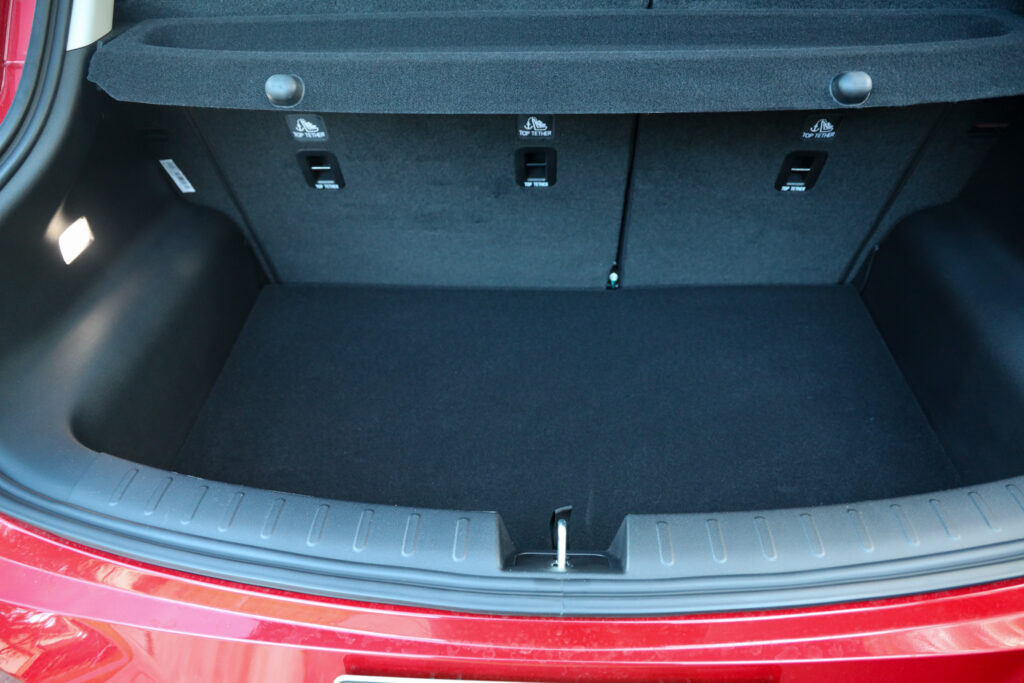
The boot is compact, at just 228 litres.
As with the exterior, there are hints of Mini, most notably with the four toggle switches, which team with some of the exterior design cues to give it some British flavour. A circular gear selector on the centre console is compact and allows for plenty of storage nearby.
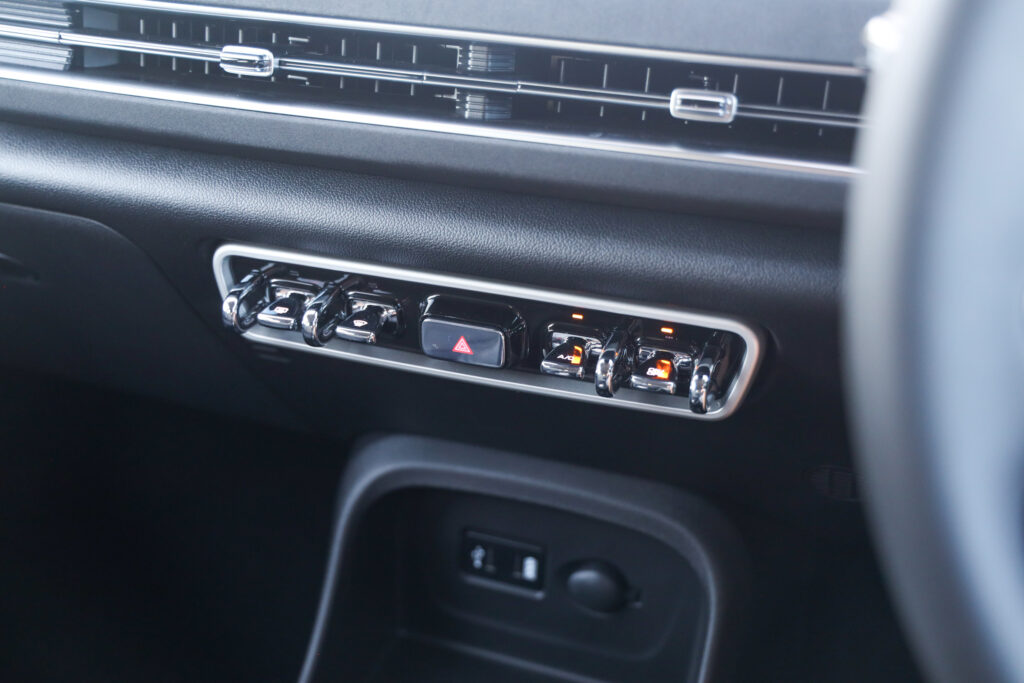
The central screen houses many of the main functions, including volume and ventilation. There are plenty of button presses and menus to get basic things done.
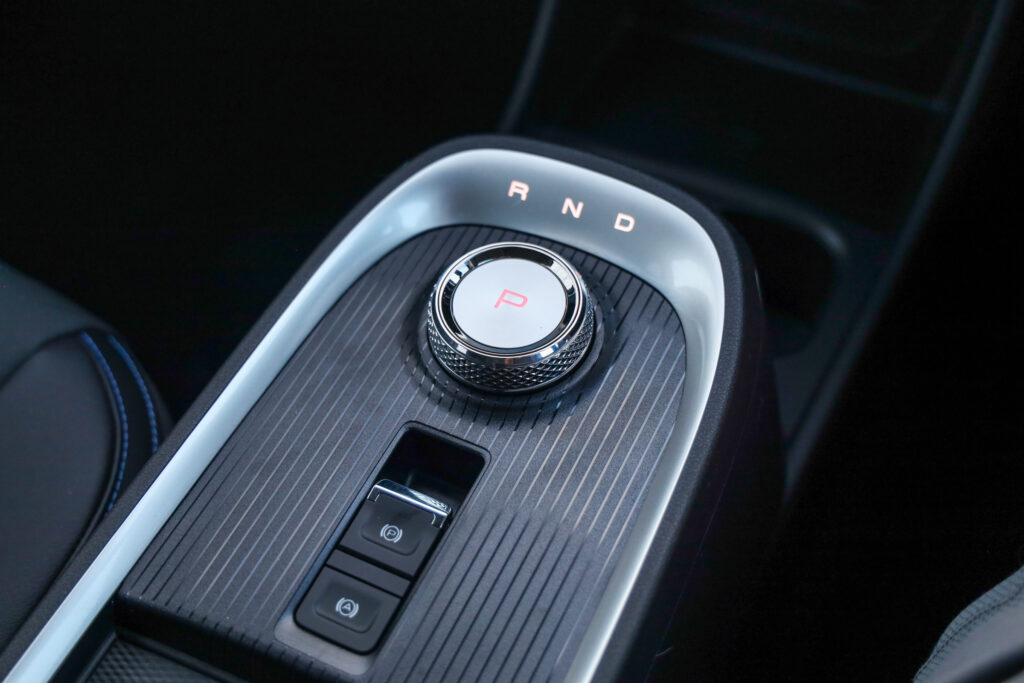
One frustration with that screen, too: If you’re travelling slowly enough to automatically activate the cameras then you’ll lose a whole bunch of functionality, including the ability to adjust the volume. It means you have to hit the “X” to close the cameras before then adjusting the volume. With any luck a software update will sort that one out…
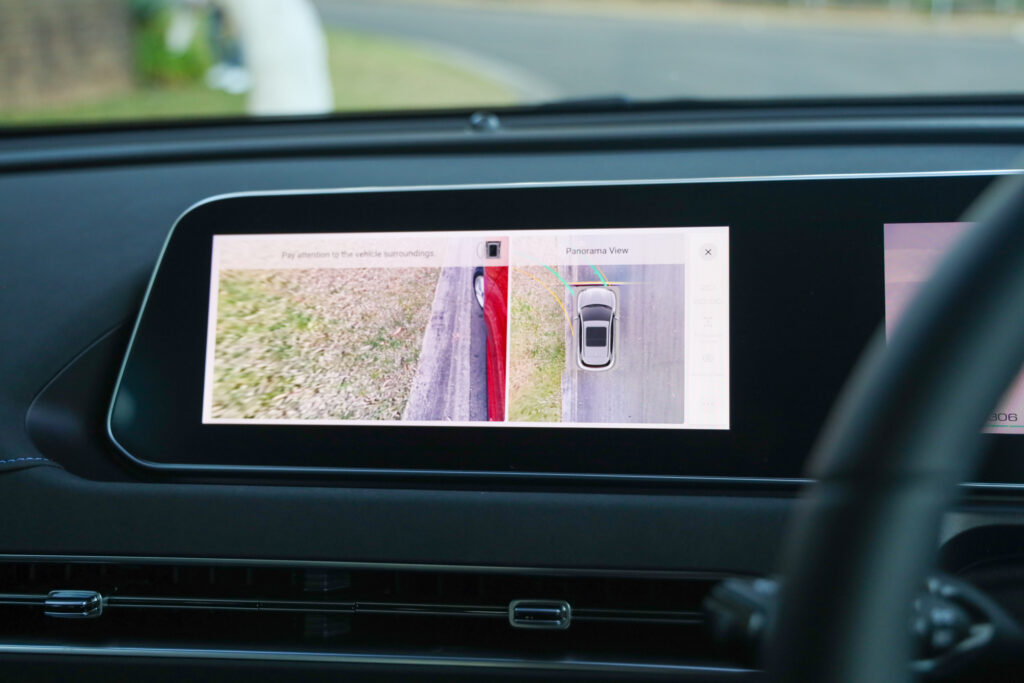
We also found it hit and (often) miss with Apple CarPlay, sometimes not connecting.
Performance and efficiency
The GWM Ora gets a single electric motor driving the front wheels.
Outputs peak at 126kW and 250Nm. They’re modest numbers but look better against 1580kg of car, which is a relative featherweight in the portly world of EVs.
Indeed it’s the pulling power – or torque – that defines how it responds. Floor the throttle and there’s a generous surge that makes like work of city traffic.

There are times it’s too much for the front wheels, which are tasked with steering and going and don’t always combine the two seamlessly. Accelerate out of a T-intersection or tight corner, for example, and it doesn’t take much enthusiasm to elicit a slip as the Giti tyres scrabble for traction.
We also had a gripe with the regenerative braking, which can be adjusted between three levels but always wants to be in its most aggressive Strong mode every time you start the car. It’s then into menus and more menus in the touchscreen to dial up your chosen mode … which is then lost next time you start the car.
As for efficiency, during a few days of varied driving we found it used about 15.5kWh per 100km. That’s good, although not exceptional considering its diminutive dimensions.
Charging
The GWM Ora gets a 48kWh battery in its most basic guise and 63kWh in Extended Range.
But there’s a difference in the battery chemistry. The Standard Range model gets a lithium-iron phosphate (LFP) battery, which does without nickel and cobalt. It’s the same type of battery used in the top three selling EVs in the country, the entry-level Tesla Model 3 and Model Y (Rear-Wheel Drive variants) and BYD Atto 3.
The Extended Range gets a higher energy density ternary or NMC battery. Those batteries typically don’t like being charged regularly to 100 percent; so aim to do it only before road trips.
Both batteries can be charged at up to 11kW using an AC charger. That means a full charge in about six hours for the 48kWh battery and more like seven hours for the bigger battery.
A home powerpoint will top them up in about 24 and 30 hours respectively.
Faster DC charging yields a 10-80 percent charge in 41 minutes for the 48kWh battery and 50 minutes for the 63kWh battery.
Ride and handling
You don’t need many corners – or much time behind the wheel – to establish the GWM Ora is basic hatchback motoring.
Its suspension is soft and cushy, which helps it smother bumps nicely.
But don’t except it to scythe through bends with the sharpness of a Tesla or poise of a Kia EV6.
It’s simply not that sort of car. Nor is it trying to be.
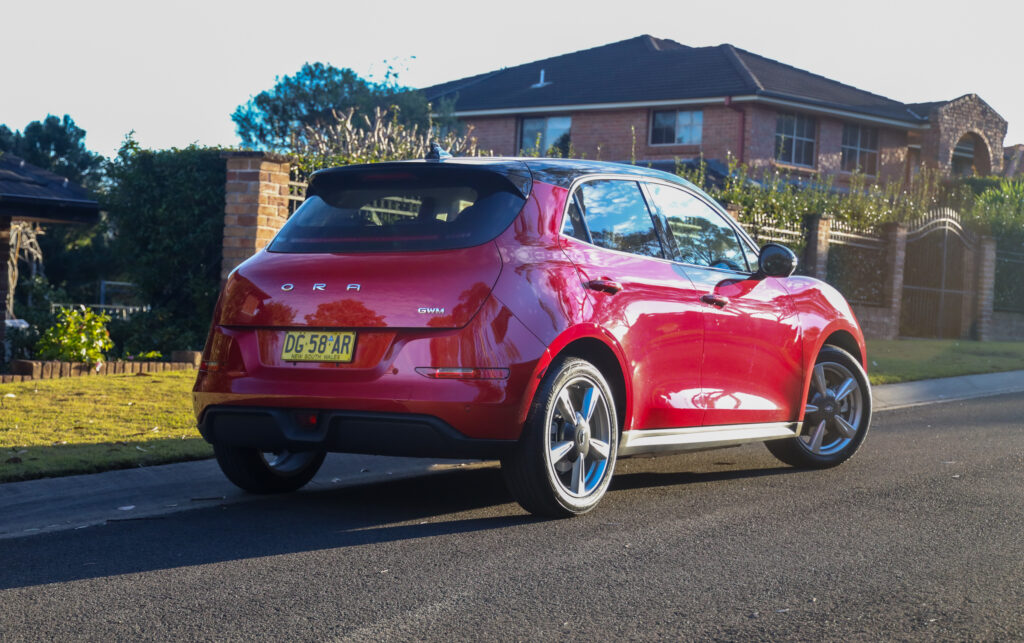
Which is absolutely fine for trundling around the suburbs. Less so if you’re one who enjoys the finer points of motoring.
Its steering is super light, to the point where even in its firmest setting we found it only just acceptable.
There’s a bit of tyre noise from the Giti rubber, but for the most part the cabin is hushed enough.
Talking point
The Ora is its own brand in some overseas markets.
But in Australia, the still-fresh GWM brand – which denotes Great Wall Motors – instead accounts for the new all-electric hatchback.
It’s all part of creating some serious scale that also includes Haval SUVs, Great Wall utes and the newly-arrived Tank 300 off-road wagon.
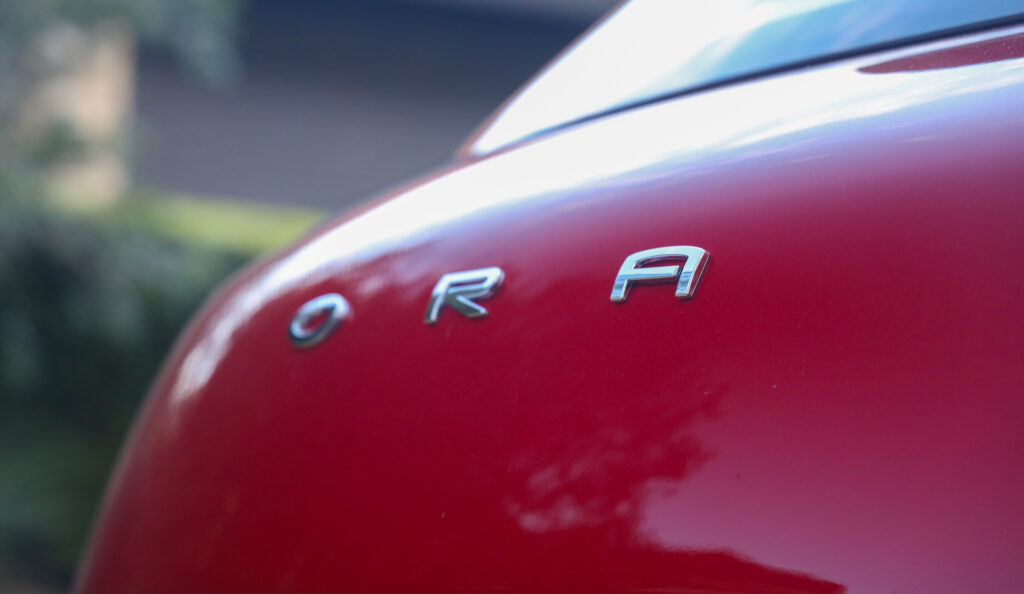
That also explains why the GWM Ora gets a different badge (an exclamation mark) on its grille and steering wheel (the Ora name is spelled out across the rear hatch) to others in the GWM family.
Safety
The GWM Ora Extended Range comes well kitted out with safety gear.
There are dual front airbags, side curtain airbags, front-side airbags and a centre airbag between the driver and front passenger.
There’s also autonomous emergency braking (AEB), speed sign recognition, driver drowsiness monitor, blind spot warning and rear cross traffic alert. The latter also provides a warning of other vehicles approaching from behind to stop passengers from opening their doors.
Ultra and GT models get a 360-degree camera, while the GT gets front cross traffic alert.
All also come with lane keep assistance, although the calibration needs work. It can be overly sensitive, warn too often and be aggressive in trying to steer you when you don’t really want or need it.
Verdict
The GWM Ora Extended Range is the EV basics done well.
What it lacks in driving polish and excitement it makes up for with a nicely presented five-door hatch that surprises with its interior space.
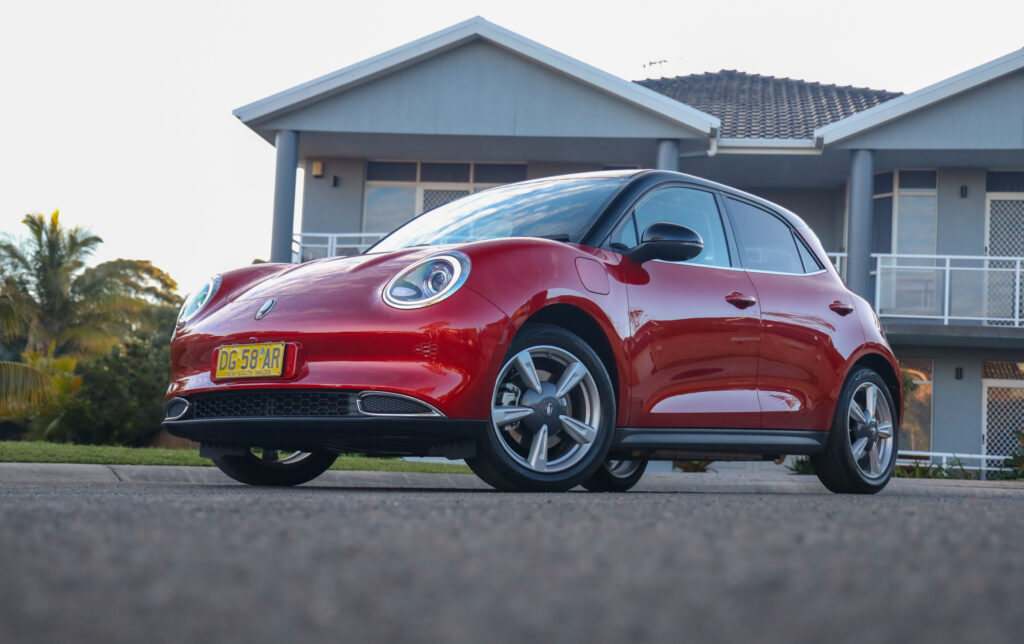
It may not be ready to light a fire under the electric car market, but it adds some depth and welcome functionality at the entry point for EVs.
2024 GWM Ora Extended Range specifications
Price: $45,990 plus on-road costs
Basics: EV, 5 seats, 5 doors, hatchback, FWD
Range: 420km (WLTP)
Battery capacity: 63kWh
Battery warranty: 8 years/unlimited km (150,000km for commercial use)
Energy consumption: NA
Motors: 1 front 126kW/250Nm
AC charging: 11kW, Type 2 plug
DC charging: 80kW, CCS combo plug
0-100km/h: 8.4 seconds

